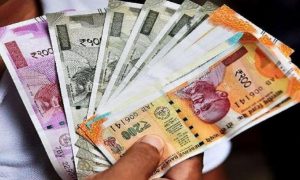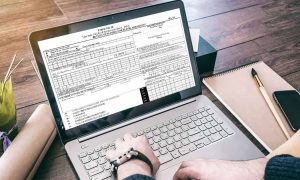Often in the rush of filing income tax returns (ITR) at the last moment, you may forget to claim certain tax deductions despite making the investment or incurring the expenses. Do remember if you are unable to use this deduction in the relevant financial year then you may not use these in the following years. “If deductions for the investments made during a particular financial year has not been claimed by the taxpayer in the income tax return filed for that year, the same cannot be claimed as a deduction in any other year,” says Sanjoli Maheshwari, Executive Director, Nangia & Co LLP.
It is better to put some effort into collecting all the relevant documents and information for claiming all these deductions before you start filing your income tax return.
Here are some of the most common avenues using which you can claim a tax deduction while filing ITR under the old tax regime:
Read More: ITR filing last date is July 31: Are banks open or closed this Saturday, July 20?
Deductions for investing in Public Provident Fund (PPF) under Section 80C
Under Section 80C, you can claim a tax deduction of up to Rs 1.5 lakh in a financial year if you have invested in certain investment options such as public provident fund (PPF), tax-saving FD, etc. PPF has an ‘exempt-exempt-exempt’ or EEE status which means you can claim a tax deduction for investing in it. Moreover, the interest given on it is non-taxable and the maturity amount is also tax-free. The PPF account comes with a lock-in period of 15 years.
“Tax deductions under Section 80C can be claimed for the investment made in the corresponding financial year relevant to the assessment year, provided the taxpayer has opted for the old tax regime,” says Maheshwari. So, if you invested in PPF in FY 2023-24, don’t forget to claim the amount invested as a tax deduction under Section 80C.
Read More: ITR Filing Deadline To Extend Till August 31? Income Tax Practitioners Flag Tech Glitch on IT Portal
Deduction for Employees Provident Fund (EPF) under Section 80C
Many salaried employees are covered under the Employees Provident Fund (EPF) scheme. In this scheme employees mandatorily deposit 12% of their salary in their EPF account. This contribution is matched by the employer too. However, you are only eligible to claim a tax deduction under Section 80C on your contribution. To make an additional contribution to the EPF account, you can opt for the Voluntary Provident Fund (VPF). The total contribution in EPF and VPF taken together cannot be more than the basic salary in any given financial year.
As per new amendments in the Finance Act, interest earned on EPF is no longer completely tax-free from FY 2021-22. The act introduced new tax exemption limits for government and private sector employees.
From 2021-22, if the employee’s contributions to EPF and VPF accounts exceed Rs 2.5 lakh in a financial year, the interest earned on the excess amount will be taxable. Further, from FY 2020-21, if the employer’s contributions to EPF, NPS, and the superannuation fund on an aggregate basis exceed Rs 7.5 lakh in a financial year, then income earned on the excess amount is taxable in your hands.
Deduction for investing in ELSS mutual funds under Section 80C
Equity-linked savings schemes (ELSS) are mutual funds that invest in equities and have a lock-in period of three years. You can invest in them and claim a tax deduction under Section 80C. However, do note that you can only claim up to Rs 1.5 lakh in a financial year as a deduction under Section 80C. Among all the eligible schemes under Section 80C, ELSS mutual funds have the shortest lock-in period. Although you can claim a tax deduction for investing in ELSS mutual funds, the gains from redeeming them are taxable in your hands.
Experts advise keeping the proof of ELSS investments always handy. “Although it is not necessary to submit proof of investments made while claiming a tax deduction, you should remember to read the rules and keep evidence or proof ready before claiming any expenditure in order to avoid any dispute later on,” says CA Chirag Chauhan, a practicing-chartered accountant.
CA Abhishek Soni, co-founder, of Tax2Win explains the concept of claiming tax deductions for ELSS mutual funds.
For example: You invested Rs 50,000 in an ELSS mutual fund in FY 2022-23 and claimed Rs 20,000 as tax deduction in that year.
“You cannot claim a deduction for the investment made in a tax-saving scheme over multiple financial years. Therefore, if you have claimed a deduction of Rs 20,000 on the same investment in FY 2022-23, you cannot claim a deduction for the remaining Rs 30,000 in FY 2023-24. However, if Rs 50,000 were invested in the ELSS scheme in 2023-24, this amount would be eligible for deduction under Section 80C in FY 23-24, says Soni.
Deduction for health insurance premiums under Section 80D
If you are below the age of 60, you can claim up to Rs 25,000 deduction for paying health insurance premiums under Section 80D. Maheshwari explains the eligibility criteria for this deduction. “Only if health insurance is paid by the husband for himself and his dependents (wife and dependent children) during a particular financial year, then deduction under Section 80D would be available to the husband on the basis of the threshold limit and other conditions prescribed,” she says.
“An additional deduction for insurance (premium) of parents is available up to Rs 25,000 if they are less than 60 years of age. If the parents are 60 years old or above, the deduction amount could go up to Rs 50,000. From FY 2015-16 a cumulative additional deduction of Rs 5,000 is allowed for preventive health checkups,” says Chauhan.
However, the deduction of Rs 5,000 is limited to the umbrella limit of Rs 25,000 or Rs 50,000 depending upon the age of the parents.





































